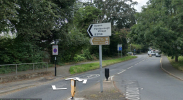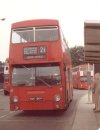My personal memories of Lewisham don't go back pre-Riverdale, but from what I've seen, it didn't change the High Street that much - Boots, Marks and Spencers and (what were then) C+A, Littlewoods, BHS, Woolworths, all had High Street frontages before Riverdale, the shops were just altered / extended back to have a customer entrance at each end.
I guess the mainly residential 'back streets' that were lost (Rhyme Road, Romer Avenue, Engate Street etc) weren't much photographed, although could be worth searching
Lewisham's photo archive.
A few buildings were demolished on the High Street side - the former Sainsburys was where the High Street / Market entrance to the shopping centre is now - I understand that the (current) Sainsburys was about the first thing to open in the new shopping centre, so that Sainsburys could continue trading, and had various temporary paths through the construction site made to get there. There's some pictures of the 132-136 High Street premises on
Sainsburys Archive.
One building that was lost was the old Tillings bus garage (at the risk of stating the obvious, the place that had the garage code TL before the operation was shifted to the current Catford garage when the latter was handed back by the military after the 1914-18 war) - this was initially known as 'Salisbury Yard' (as in the yard behind the
'Salisbury' pub, which was also lost to make the clock tower entrance to Riverdale.) - the garage is marked as 88a (High Street) on
post-war OS maps, although the vehicle entrance was off Molesworth Street. I understand it continued in use for vans / lorries used by other parts of Tillings' business after the buses moved out.
Again, possibly stating the obvious, but Marks + Spencer and most of what's in the triangle between the clock tower, Lewis Grove and the High Street was completely destroyed in 1944 by a V1 rocket, so what's there now is 1950s on. More on the '
Running Past' blog which has a lot of other Lewisham content.
Another blog that may be worth following is
Long + Lazy Lewisham, which is fairly new, but gradually working its way south along Lewisham High Street.
While the music may or may not appeal, the video to
Bankrobber, by the Clash, was mostly filmed between the Lewisham Clock Tower and Odeon in about 1980.

 Actually, finding the turn-off for Farnborough after Locks Bottom in the dark was more of a problem for rookie drivers.
Actually, finding the turn-off for Farnborough after Locks Bottom in the dark was more of a problem for rookie drivers.

